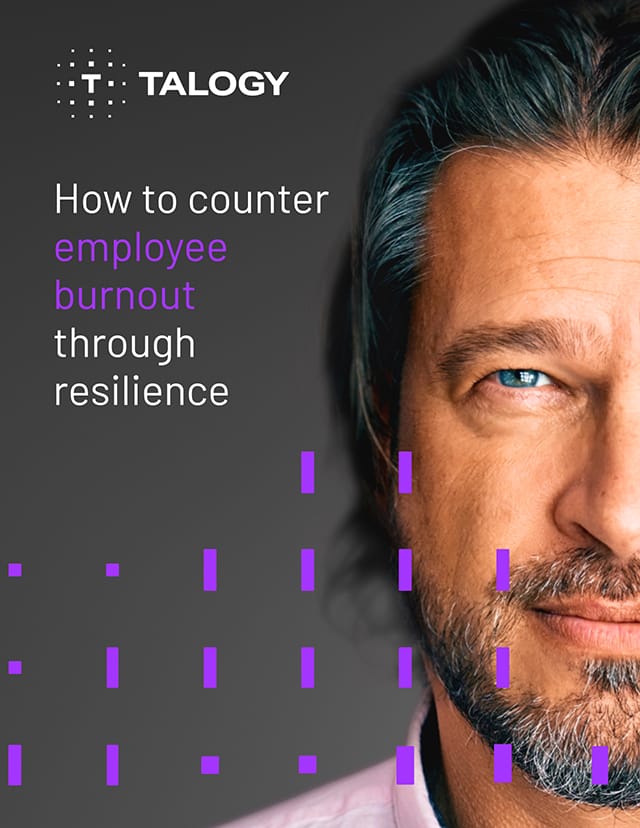Written by Ali Shalfrooshan, Head of International Assessment R&D
Employee stress has once again reached an all-time high — even higher than in previous years — with 44 percent of employees globally saying they experienced a lot of daily stress in the previous day. Chronic stress at work isn’t just a daily nuisance; it can seriously impact employees’ overall well-being and can lead to burnout, a problem that negatively impacts productivity and employee retention and majorly disrupts a person’s life.
The good news is that employers can take an active role in fighting back against these problems. Learn how you can create an environment for employees that serves to minimise unhealthy stress levels and promotes greater well-being.
What role does stress play in the workplace?
First, it’s important to understand that stress in the workplace isn’t always a bad thing. Research shows that moderate stress levels can boost motivation, build resilience, encourage bonding, and more. Consider the stress you may have felt before giving an important presentation. Chances are, it pushed you to prepare and practice and left you feeling accomplished after a job well done.
Chronic or extreme stress, on the other hand, does not deliver the same benefits as isolated instances of moderate stress. Frequent and intense feelings of stress negatively impact employees’ well-being. A stressed-out employee may seem to get a lot of work done as they scramble to keep up with deadlines, but this sort of approach to work isn’t sustainable and is likely to lead to a major drop in productivity, known as burnout.
Employee burnout has become a major issue, with 74 percent of workers saying they experience burnout on the job at least sometimes. The most serious cases of burnout push employees to resign or take long periods off work to try to recover their mental and even physical health.
What causes chronic stress and employee burnout?
Employees can experience high levels of stress and get burned out for reasons outside of their work responsibilities. For example, the mental strain of going through a divorce or a death in the family may spill over into an employee’s mental well-being at work.
However, the drivers behind employee burnout are usually tied at least in part to an employee’s experience working for your company. It’s normal to have stressful events and days at work, but a job that feels stress-inducing day after day is sure to cause some serious issues.
According to the Health and Safety Executive, there are six areas that, when managed improperly, can lead to work-related stress:
- Demands: A workload or work environment that is too demanding is sure to wear on an employee’s mental well-being and morale.
- Control: Employees can experience more stress when they feel a lack of autonomy regarding how they work.
- Support: When employees don’t receive the resources and encouragement they need from the organisation, this lack of support can induce chronic stress.
- Relationships: Interpersonal relationships at work can be a source of stress when they’re characterised by conflict or disrespect.
- Role: When an employee’s role and responsibilities at work are unclear, they can feel overwhelmed and can easily become stressed.
- Change: Finally, organisational changes at work can cause employees stress if they are not properly explained and managed.
How can companies create an environment that improves employee well-being?
Your organisation can do its part to help employees enjoy their work and avoid getting stressed out. Here are a few key steps to take.
- Don’t overburden employees with unrealistic expectations or workloads. Perpetually expecting employees to give 110 percent at work will only lead to employees who are fatigued and burned out.
- Check in with your team to understand where stress exists and what factors may be causing it. Managers can play an important role here by gathering candid feedback from employees. You may also want to consider anonymous surveys. The information you learn may help you determine where changes need to be made.
- Trust your people and resist the tendency to micromanage. Give employees as much autonomy over their schedules and work styles as possible so they can take advantage of the processes and methods that work best for them.
- Offer the right support your employees need to succeed. This might include granting access to certain software tools, resources, or trainings that will empower employees to work efficiently and effectively without getting frazzled.
- Promote a people-centred leadership style so employees feel valued, understood, and supported by their superiors. Ill-equipped managers “create a lot of unnecessary work and stress,” according to 84 percent of American workers, so it’s crucial managers are well trained for their roles.
How can companies help individual employees combat stress and burnout?
Employees can also take an active role in their own mental well-being at work, and your organisation can do its part to promote these positive behaviours.
- Help employees understand their own psychological resources for developing more resilience. Cultivating the right attitudes and skills, such as optimism and emotion regulation, can make a big difference in helping employees combat stress and burnout.
- Highlight the connection between mind and body to help employees understand their physiological resources for combatting stress. This includes, for example, eating healthy meals and snacks at regular intervals and getting adequate sleep at night.
- Encourage employees to practice healthy work-life balance and take time to renew themselves each day. Dwelling on work-related challenges or failing to unplug from work after hours can contribute to chronic stress.





